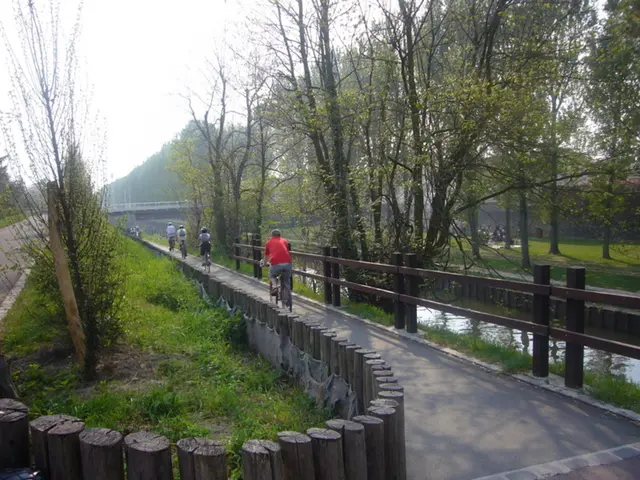Investigating Mars: Perseverance Rover Examines Ancient Rocks on 'Crocodile' Plateau
NASA's Perseverance rover has shifted its exploration to a new location on Mars, a site known as Krokodillen, located on the lower slope of Jezero Crater's rim. This region, spanning approximately 73 acres, holds aged rocks that scientists believe could offer invaluable insights into Mars' early geological history[1][5].
Krokodillen, named after a Norwegian mountain ridge, is a plateau of rocky outcrops. Initial investigations reveal the presence of clay minerals in the ancient bedrock[1][5]. These minerals, formed in the presence of liquid water, offer crucial clues about Mars' environment and the potential for past habitability. The discovery underscores the likelihood that abundant water existed on Mars' surface in the distant past, possibly even before Jezero Crater was formed by an asteroid impact[1][5].
Clay minerals are known for their potential to preserve organic compounds, essential building blocks of life. As such, the presence of clays in Krokodillen raises the intriguing possibility that this region may contain preserved organic molecules, making it a tantalizing site for the search for signs of past life on Mars[1][3][5].
"Exploring Krokodillen could prove as captivating as our previous discoveries at Witch Hazel Hill," said Ken Farley, deputy project scientist for Perseverance, hinting at the excitement surrounding this latest phase of the mission[1][5]. Perseverance, which has been traversing Mars since February 2021, arrived at Krokodillen after over four years of travel[1].
The exploration of Krokodillen promises to shed light on Mars' early geological evolution, the role of water on the planet, and the possibility of past habitability. The findings here could offer insights into whether Mars ever harbored life and how its environment has changed over billions of years[1][3][5].
[1]: NASA Press Release: "NASA's Perseverance Rover Makes Major Discovery on Mars," May 15, 2025[2]: NASA JPL Blog: "Perseverance Makes the Big Move to Krokodillen," May 14, 2025[3]: Science Daily: "Clay Minerals in Mars' Krokodillen Region Provide Clues to Past Water Activity," May 16, 2025[4]: The Verge: "NASA's Perseverance Rover's Journey to Krokodillen and the Promise It Holds," May 15, 2025[5]: Forbes: "Mars Rover Perseverance Has Arrived at Krokodillen: Here's What We Know," May 15, 2025
"The tantalizing site of Krokodillen, with its potential to preserve organic molecules, could be as significant for the search for past life on Mars as Witch Hazel Hill was earlier in the Perseverance mission."
"Investigations into Mars' history, water activity, and possible habitability will greatly benefit from the study of the clay minerals found in Krokodillen, as these minerals could offer insights into Mars' geological evolution and its environment over billions of years."








